In softball, an accurate throw is nothing without power. That’s why every player wants to improve the strength of their throwing arm. But developing a strong throwing arm isn’t just a matter of natural talent or genetics. It requires hard work, dedication, and a strategic training plan that targets the specific muscles involved in throwing a softball. In this article, we’ll explore the 9 best exercises to strengthen your throwing arm and take your softball game to the next level.
From triceps dips to resistance band exercises, we’ll break down each workout step-by-step and provide insights on how it helps in enhancing the power of your throwing arm.
But before we dive into the exercises themselves, it’s important to understand some key considerations for developing a comprehensive training plan that addresses your whole body, not just your arm.
So grab your gear and let’s get started on the path to a stronger, more powerful throwing arm that will give you the edge you need to succeed on the softball field!
Before You Begin
If you want to develop a strong throwing arm for softball, it’s important to approach your training with a holistic mindset. This means not only targeting the specific muscles used in throwing but also focusing on building overall strength and conditioning throughout your body.
Here are some key considerations to keep in mind before you start your training:
Work out your full body
While it’s important to focus on the muscles involved in throwing, you shouldn’t neglect the rest of your body. A balanced workout routine that targets your core, legs, and back can help you generate more power and maintain proper form throughout the throwing motion.
Understand what muscles are used for throwing
Throwing a softball requires a coordinated effort from multiple muscle groups, including the chest, shoulders, triceps, biceps, and wrist muscles. Each of these muscles plays a specific role in generating power, accuracy, and consistency in your throws.
Warm up before every practice
Before you start any throwing exercises, it’s crucial to properly warm up your body to prevent injury and ensure optimal performance. A dynamic warm-up that includes light cardio, stretching, and mobility workouts can help increase blood flow, loosen up tight muscles, and improve your range of motion.
By keeping these considerations in mind and adopting a comprehensive approach to your training, you can help develop a stronger, more accurate throwing arm that will benefit your performance on the softball field.
Now let’s dive right in.
Top 9 Exercises to Strengthen the Throwing Arm in Softball
#1: Push-ups
This classic exercise helps to build overall upper body strength, including the chest, triceps, and shoulders. By developing these muscles, you can generate more power in your throwing motion and maintain proper form throughout the throw.
Gear you need: None.

How to do it:
- Get into a plank position with your hands shoulder-width apart.
- Lower your body down until your chest nearly touches the ground.
- Push yourself back up to the starting position.
- Repeat for 10 – 15 reps.
- Do 2 – 3 sets.
Related: Softball drills you can practice at home alone
#2: Shoulder Fly
The shoulder fly exercise can be done with either dumbbells or resistance bands. This is a great workout for targeting the deltoid muscles, which are responsible for shoulder flexion and abduction. By strengthening these muscles, you can improve your throwing range and accuracy.
Gear you need: Resistance bands or dumbbells
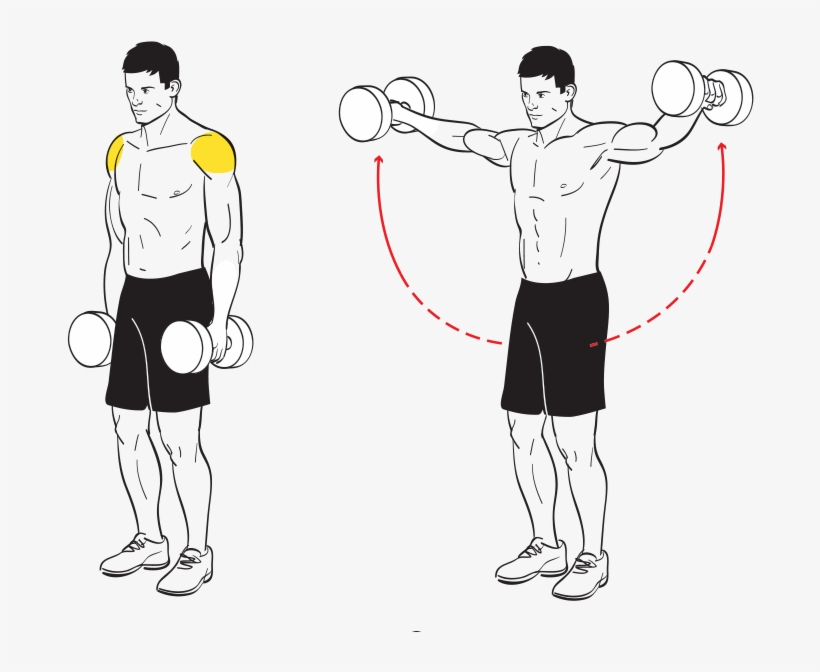
How to do it:
- Stand straight and hold a resistance band or a light dumbbell in your throwing hand.
- Extend your arm to the side at shoulder height, then slowly raise it to the front.
- Hold for a few seconds, then lower it back to the side.
- Repeat for 10-15 repetitions, then switch to the other arm.
- Do 2 – 3 sets for each arm.
#3: Tricep Dips
The triceps are an essential muscle group for throwing a softball, as they are responsible for extending the elbow during the throwing motion. By performing triceps dips, you can develop the strength and endurance of these muscles, allowing you to throw with more power and consistency.
The are several variations of this exercise, some require no equipment at all. I will demonstrate them below.
Variation 1: Tricep extension with dumbbells
Gear you need: Dumbbell or weighted object.
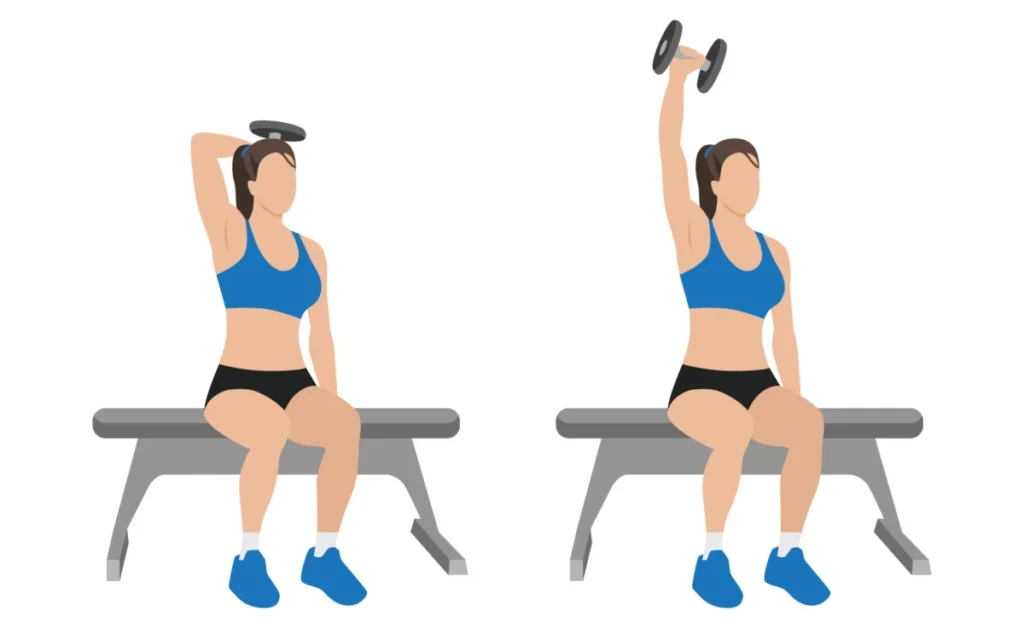
How to do it step by step:
- Stand with your feet shoulder-width apart and hold a dumbbell in your throwing hand.
- Raise your arm overhead and lower the weight behind your head, keeping your elbow pointed to the ceiling.
- Extend your arm back up and repeat for 10-15 repetitions before switching to the other arm.
Variation 2: Triceps dips without equipment
Gear you need: nothing but an elevated surface, like your bed or a bench.
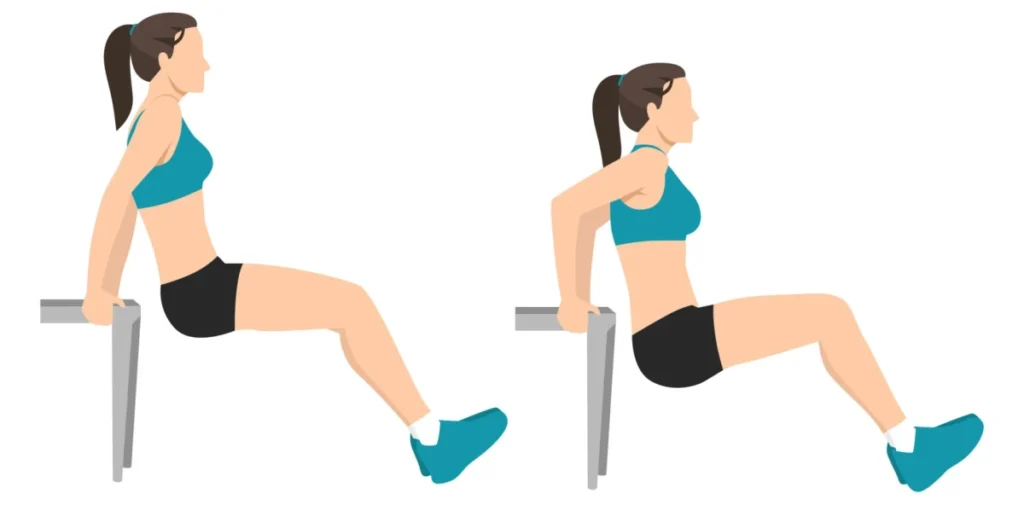
How to do it:
- Sit on the edge of your bed with your hands gripping the edge on either side of your hips. Your fingers should be pointing towards the front of the bed, and your palms should be facing downwards.
- Walk your feet forward, sliding your body off the bed and onto the floor. Your arms should be supporting your weight, and your knees should be bent at a 90-degree angle.
- Slowly lower your body towards the floor, bending your elbows until they form a 90-degree angle.
- Push yourself back up using your triceps, straightening your elbows, and return to the starting position.
- Repeat steps 3 and 4 for 10-15 repetitions.
#4: Bicep Curls
While the triceps are crucial for extending the elbow during the throwing motion, the biceps are responsible for flexing the elbow. By performing bicep curls, you can strengthen these muscles and generate more power in your throwing motion.
Gear you need: Dumbbells or weighted objects.
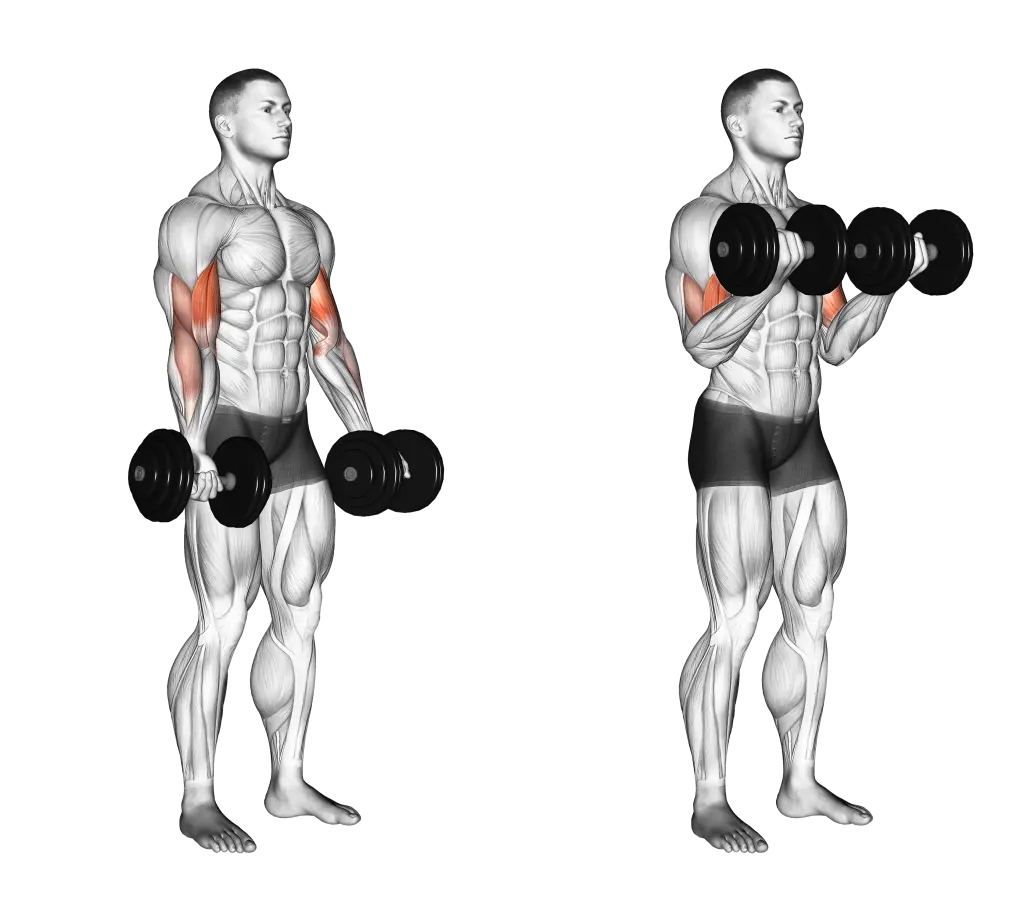
How to do it:
- Stand with your feet shoulder-width apart and hold a dumbbell in each hand.
- Slowly curl the weights towards your chest, keeping your elbows close to your body.
- Hold for a few seconds, then lower the weights back down.
- Repeat for 10-15 repetitions.
#5: Wrist Curls
The wrist muscles are critical for generating snap and speed in the throwing motion. By performing wrist curls, you can develop the strength and endurance of these muscles, allowing you to throw with greater velocity and control.
Gear you need: Dumbbells or weighted objects.
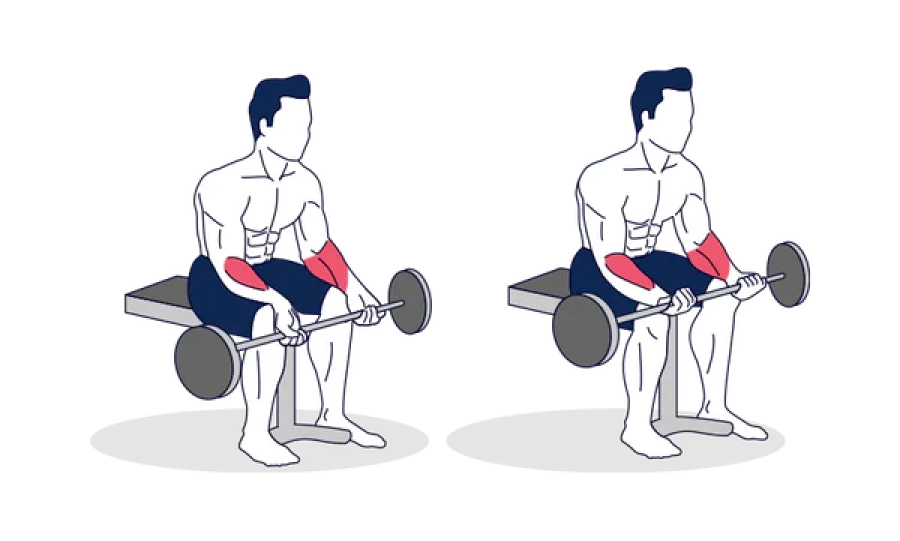
How to do it:
- Sit on a bench or chair with your feet flat on the floor.
- Hold a dumbbell in your throwing hand with your palm facing up.
- Rest your elbow on your thigh, letting your hand hang over the edge.
- Curl your wrist towards your body, then back down.
- Repeat for 10-15 repetitions, then switch to the other arm.
#6: Softball Overhead Throws
I know you waited so long for this moment. I do, too.
Overhead throws are perhaps the most popular drill that you can do with a softball.
The reason I didn’t put this exercise first is that although it’s an exciting exercise with softball, it’s not the most effective to build your core strength in the first place.
But after all these sweating exercises, you deserve some fun. Right?
This drill targets the shoulder muscles, particularly the deltoids and rotator cuff muscles.
By performing overhead throws, you can develop the strength and range of motion of these muscles, allowing you to throw with more power and accuracy.
Gear you need: Softball.
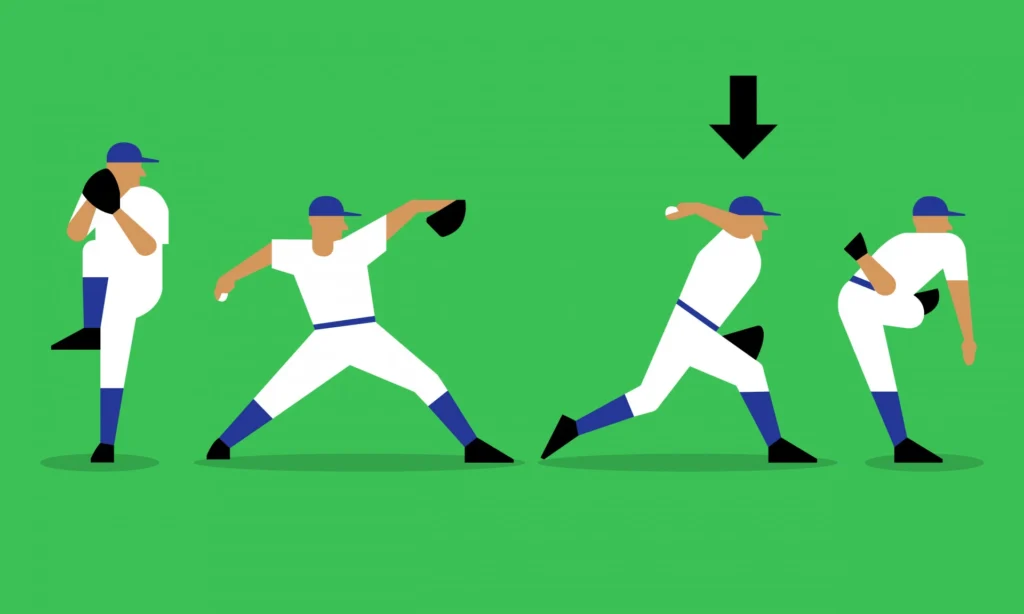
How to do it step by step:
- Stand with your feet shoulder-width apart and hold a softball with both hands.
- Raise the ball overhead, then bring it behind your head.
- Use your throwing arm to throw the ball as far as you can.
- Catch the ball as it comes back, then repeat for 10-15 repetitions.
#7: Wall Throws with Medicine Balls
Wall throws are a great exercise for developing power in your throwing motion. By throwing the ball against the wall with force, you can engage the chest, shoulders, and triceps, generating more power in your throw.
This is also one of the most effective exercises to strengthen your throwing arm for softball.
Gear you need: Medicine ball.
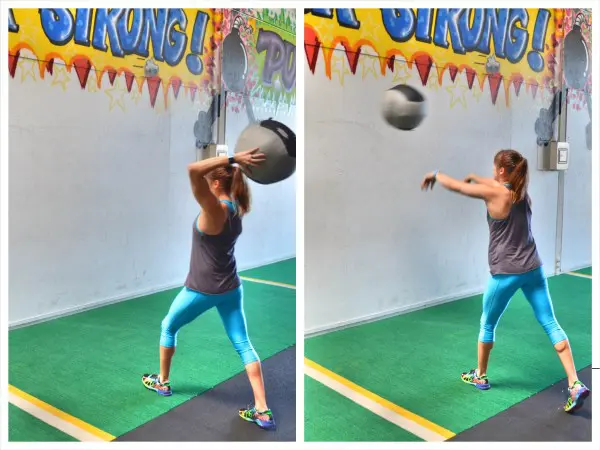
- Stand a few feet away from a wall, holding a medicine ball with both hands.
- Bring the ball behind your head, then throw it at the wall with maximum force.
- Catch the ball as it bounces back, then repeat for 10-15 repetitions.
- Do 2 – 3 sets.
#8: Medicine Ball Chest Pass
This workout helps to improve your chest and shoulder muscles’ explosiveness and strength, which translates to a more powerful throw. By using a medicine ball, you’re also engaging your core muscles, which are essential for stabilizing your body during the throwing motion.
Gear you need: Medicine ball.
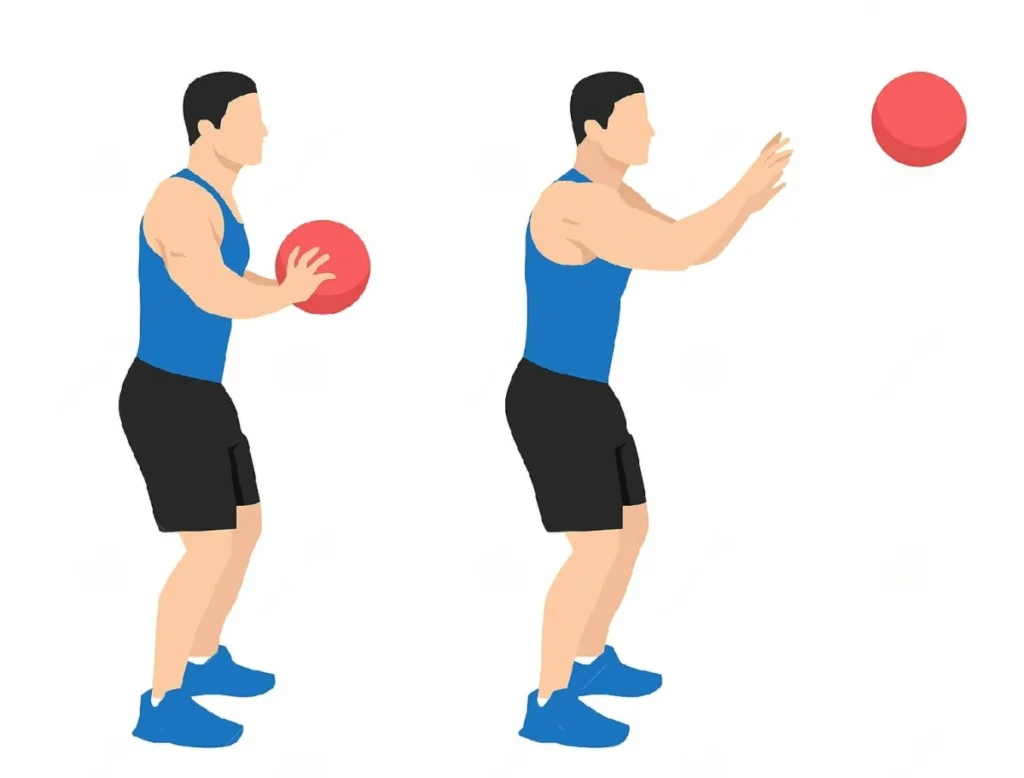
How to do it step by step:
- Stand facing a wall with your feet shoulder-width apart, holding a medicine ball at chest level.
- Step forward with one foot and push the ball forward with both hands, extending your arms fully.
- Catch the ball as it bounces back off the wall, then repeat for 10-15 repetitions.
#9: Resistance Band Rotator Cuff
This exercise targets the rotator cuff muscles, which are essential for maintaining shoulder stability and preventing injuries in softball players. By strengthening these muscles, you can improve your throwing accuracy and reduce the risk of shoulder injuries.
Gear you need: Resistance band
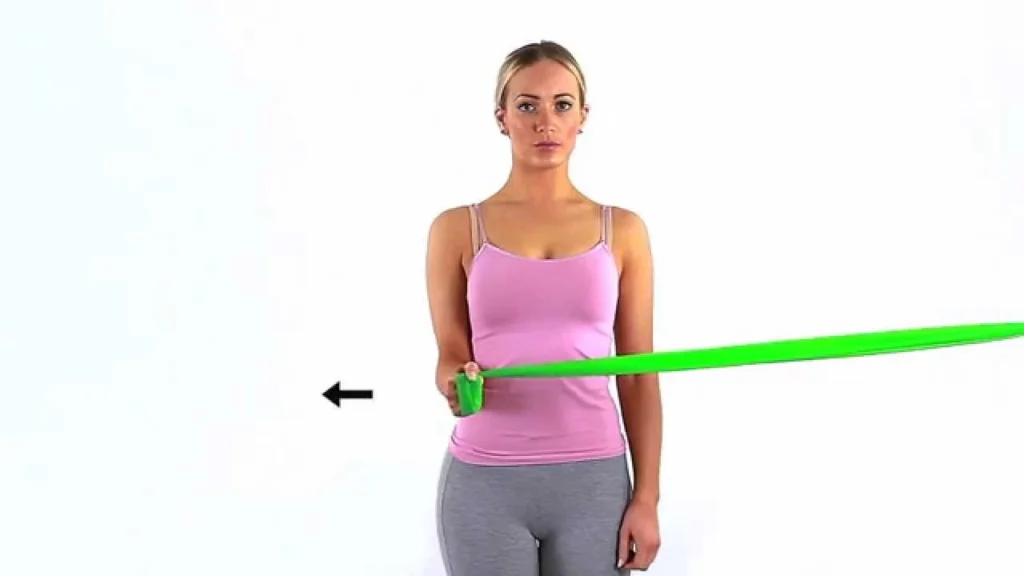
How to do it:
- Attach a resistance band to a sturdy object at shoulder height.
- Stand perpendicular to the object with your throwing arm facing it, holding the band in your throwing hand.
- Keep your elbow tucked in and slowly rotate your arm away from the object, feeling the resistance from the band.
- Return to the starting position and repeat for 10-15 repetitions.
Post-Practice
After you’ve finished practicing or playing, it’s important to stretch your muscles to avoid soreness and stiffness. You can stretch your arms, shoulders, and forearms by holding each stretch for at least 15-30 seconds.
It’s also essential to rest and recover between practices to prevent injuries and improve your overall performance.
A healthy diet with a good balance of protein, carbohydrates, and fats can also help to support your body’s recovery.
Frequently Asked Questions
Q: What muscles do you use to throw a softball?
A: The primary muscles used in throwing a softball are the shoulder, triceps, and forearm.
Q: Does forearm strength help you throw harder?
A: Yes, having strong forearms can help you generate more power and speed in your throws.
Q: How do you rehab a throwing arm?
A: If you experience pain or discomfort in your throwing arm, it’s important to rest and avoid throwing until the pain subsides. You can also apply ice and perform gentle stretches to help reduce inflammation and improve flexibility. If the pain persists, you should consult a medical professional for further treatment.
Conclusion
The fact that you still read until this moment is amazing. That dedication is solid proof of how you will achieve much more with softball!
Remember, choosing the right exercises to strengthen the throwing arm in softball is just a start. What matters more is your sheer will to practice regularly, keep improving day by day, and finally crush the game.
With the right approach and strategy, you surely will be a great softball player someday!
Norman Dang is a diehard softball fan with full of energy and enthusiasm. He has over ten years of experience in playing softball and coaching softball for kids. He shares his expertise on the SoftballTriple blog.

